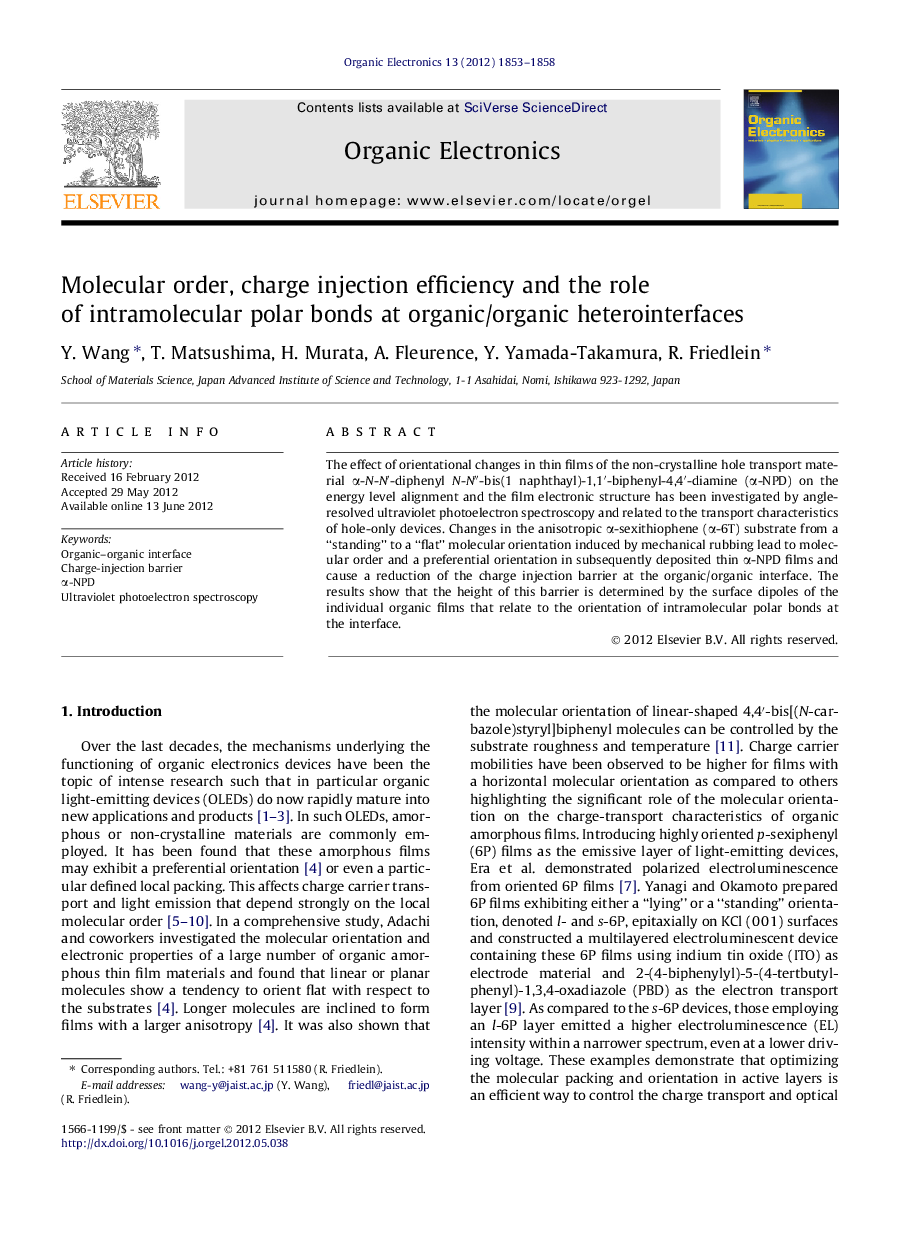| Article ID | Journal | Published Year | Pages | File Type |
|---|---|---|---|---|
| 1267353 | Organic Electronics | 2012 | 6 Pages |
The effect of orientational changes in thin films of the non-crystalline hole transport material α-N-N′-diphenyl N-N″-bis(1 naphthayl)-1,1′-biphenyl-4,4′-diamine (α-NPD) on the energy level alignment and the film electronic structure has been investigated by angle-resolved ultraviolet photoelectron spectroscopy and related to the transport characteristics of hole-only devices. Changes in the anisotropic α-sexithiophene (α-6T) substrate from a “standing” to a “flat” molecular orientation induced by mechanical rubbing lead to molecular order and a preferential orientation in subsequently deposited thin α-NPD films and cause a reduction of the charge injection barrier at the organic/organic interface. The results show that the height of this barrier is determined by the surface dipoles of the individual organic films that relate to the orientation of intramolecular polar bonds at the interface.
Graphical abstractFigure optionsDownload full-size imageDownload as PowerPoint slideHighlights► The molecular orientation within non-crystalline transport materials can be controlled. ► This affects the charge-injection efficiency at organic–organic interfaces. ► The energy-level alignment is determined by the intramolecular polar bond orientation.
